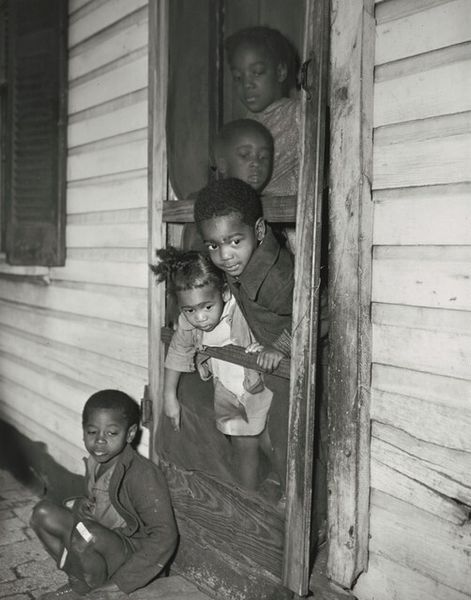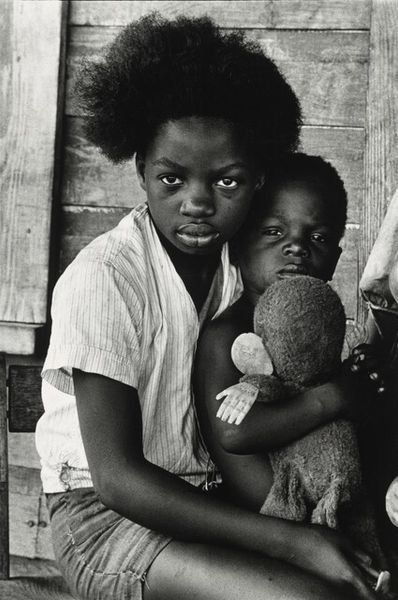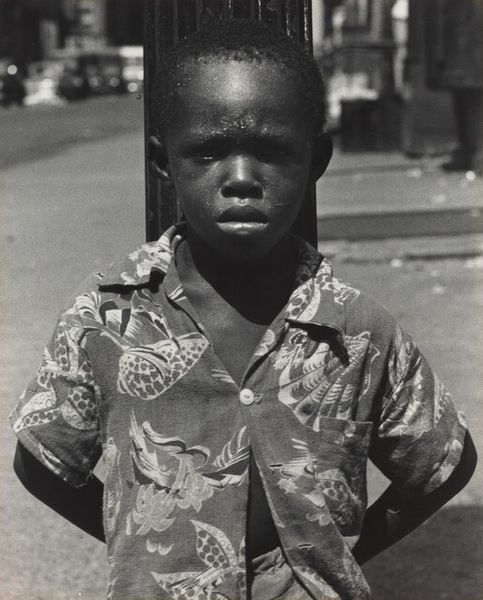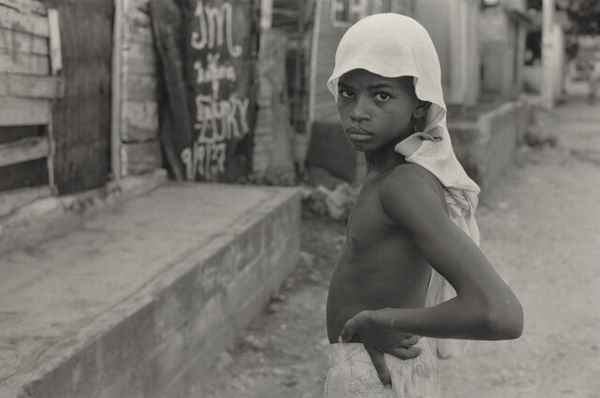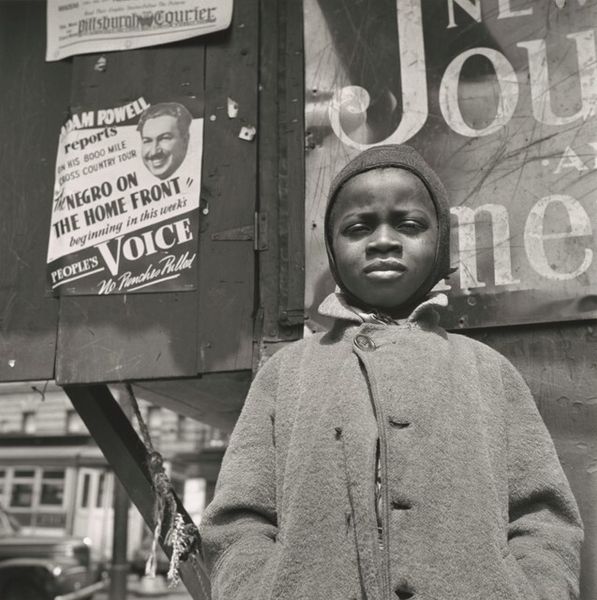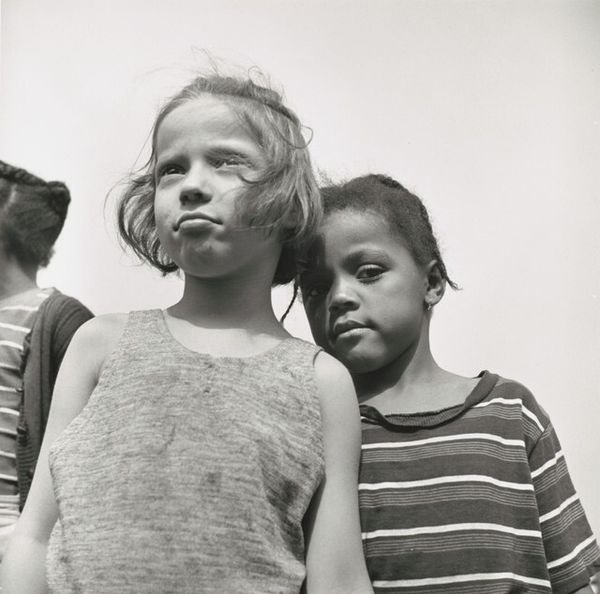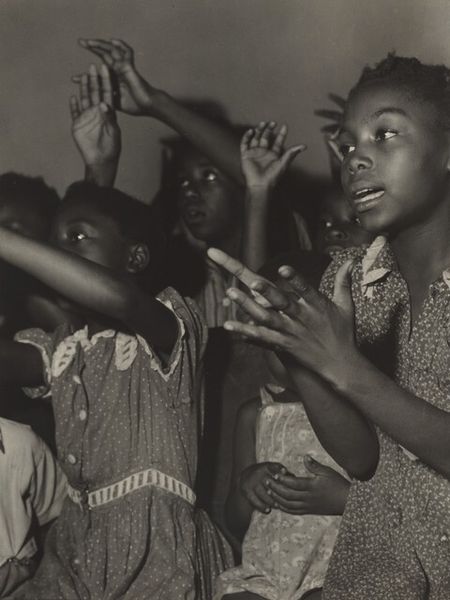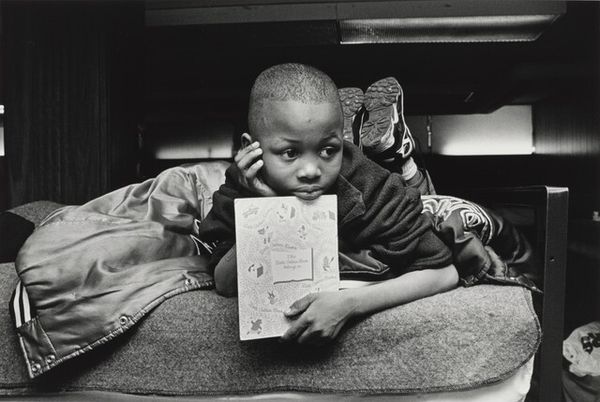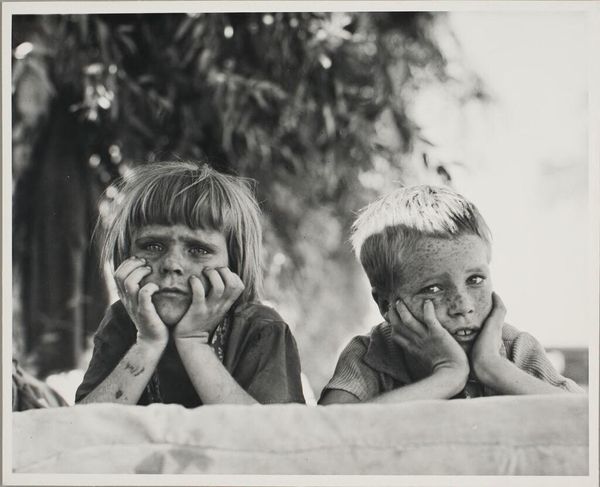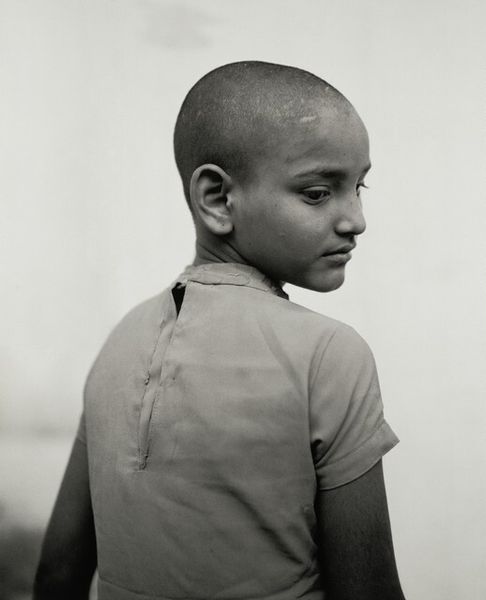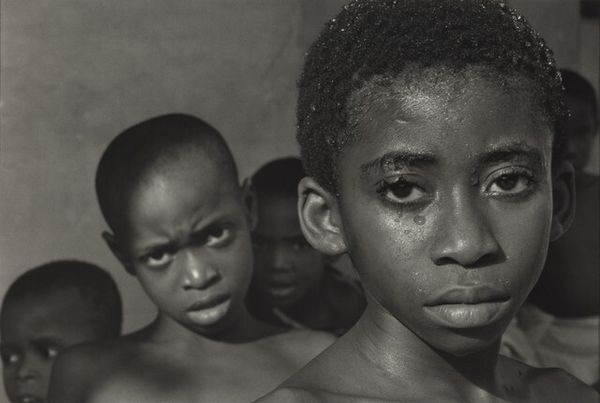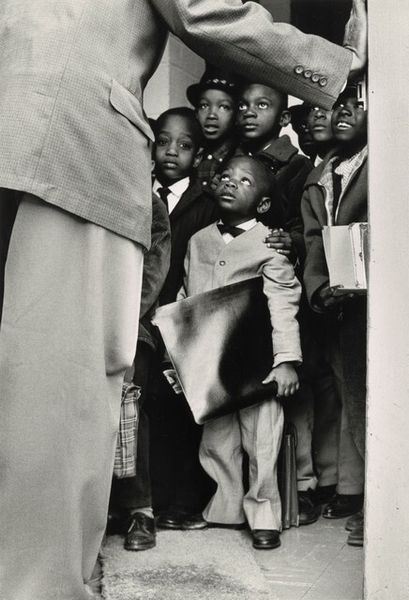
photography
#
portrait
#
black and white photography
#
photo restoration
#
cool tone monochrome
#
black and white format
#
archive photography
#
street-photography
#
photography
#
historical photography
#
black and white theme
#
black and white
#
monochrome photography
#
genre-painting
#
monochrome
#
realism
Dimensions: sheet: 35.6 × 27.9 cm (14 × 11 in.) image: 34.1 × 26.8 cm (13 7/16 × 10 9/16 in.)
Copyright: National Gallery of Art: CC0 1.0
Curator: Immediately, I feel this deep sense of solemnity and resilience. The contrast is stunning, almost painful. Editor: Yes, that is an apt reading. What you’re seeing is “Washington (southwest section), D.C. Two Negro boys,” a poignant photograph taken by Gordon Parks in 1942. It's a stark portrayal of two young boys during a difficult period in American history, captured with his masterful eye. Curator: Their expressions… they’re so knowing. The composition is interesting. You've got the rough texture of what seems to be wooden fencing dominating the background, while these two beautiful boys are framed against it. I almost feel like it's an attempt to say they are not separate. It does strike me how this composition acts as both support and entrapment. Editor: You have keyed in on the contrasting tones. Parks does not offer many cues. The high-contrast black and white format underscores the gravity of the scene, drawing attention to the textures and the stark reality of their environment. There's a real play of light and shadow here that amplifies the emotion. It’s interesting how a formal element contributes so profoundly to its emotional resonance. Curator: Absolutely. The gaze of the boy to the left. It avoids me completely. Then the other… He's locked onto something… Perhaps our assumptions. His slightly open jacket seems almost defiant, contrasting with the enclosed formality of the boy in the coat. There is an entire social critique going on here. I wonder what he would think if he knew we are speaking about this? Editor: Parks intended the series to highlight the realities of marginalized communities during segregation. Its very powerful semiotic charge operates from multiple axes: childhood, race, and poverty. When considered together, these semiotic forces form the essence of Parks’s critical realism. Curator: This photo does what great art should: It asks you to pause, consider, and connect. I feel very little optimism in the frame. Still… the glimmer of intelligence and fortitude in the boy's gaze suggests something. Editor: Well, Parks has given us much to examine with its composition, technique, and historical resonance, hasn’t he? It invites introspection on issues that remain relevant today, doesn’t it?
Comments
No comments
Be the first to comment and join the conversation on the ultimate creative platform.

